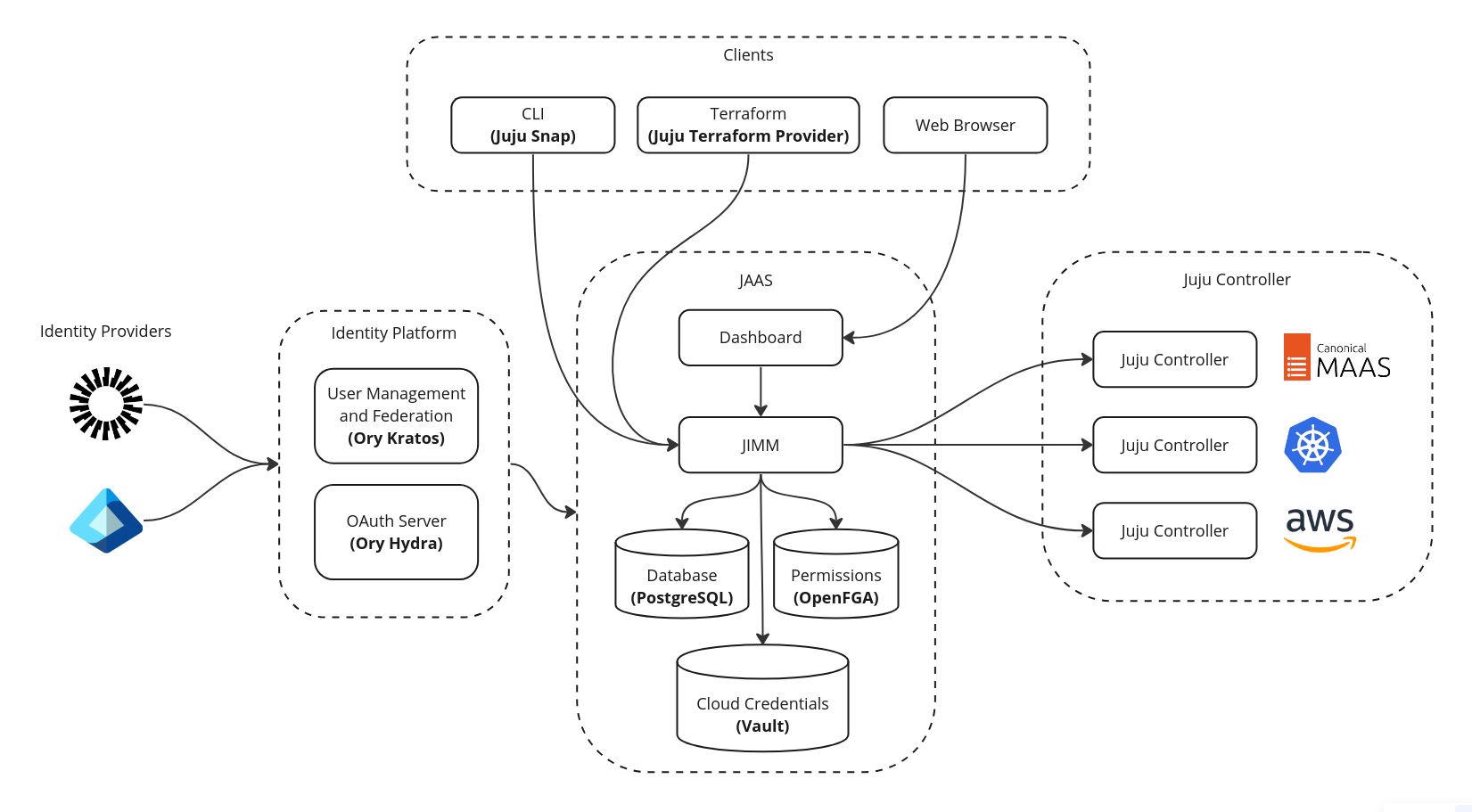Architecture¶
The diagram below shows an overall picture of JAAS architecture.

This includes the following components:
Juju Intelligent Model Manager (JIMM)
ReBAC authorisation (OpenFGA)
Database (PostgreSQL)
Secure storage (Vault)
JIMM is an API server that implements a number of Juju facades (i.e. endpoints) and behaves as a Juju Controller, which under the hood proxies operations to underlying controllers. This enables other tools, like the Juju Dashboard or Juju CLI, that communicate with a Juju Controller to work seamlessly with JIMM.
For authentication of users or service accounts, JAAS requires an OIDC Provider (Hydra) that handles the standard OAuth2.0 flows including browser flow, device flow, and client credentials.
The remainder of this document briefly goes into more detail on JAAS’ deployment and scalability.
Deployment¶
The components of JAAS are deployed via Juju K8s charms. This implies that in order to deploy JAAS, you must first bootstrap a single Juju controller to manage the components of JAAS, this is described in more detail in our Get started with JAAS.
Not all the components of JAAS are expected to be deployed on Kubernetes. With the use of Juju offers certain components can be deployed to virtual machines and used by the Kubernetes charms. These components include PostgreSQL and Vault and can be deployed with their corresponding machine charms. Currently JIMM and OpenFGA are only supported as Kubernetes charms.
Scalability¶
There are several stateless and stateful components to JAAS.
Stateless¶
JIMM: The JIMM API server.
OpenFGA: The OpenFGA API server.
Note
Although we’ve put JIMM here as a stateless service, it is partially stateful. See the section on communication for more info.
Stateful¶
PostgreSQL: The database used by JIMM and OpenFGA.
Vault: The secure key-value store used by JIMM.
Currently, the JIMM, OpenFGA and Vault charms support scaling provided they are deployed on Kubernetes. Scaling the database is not currently supported.
Adding more units via Juju is possible with the command juju scale-application <application> 2 to scale an
application to N units, 2 in this example.
Communication¶
Communication between clients and JIMM takes place via a websocket based API. This is identical to Juju’s communication model and enables the same Juju CLI to transparently communicate with a JIMM controller as if it were a Juju controller.
This websocket API makes Juju and JIMM, partially stateful. Once a websocket session is established, authentication is performed and the session can be used to make further requests. The nature of this model means that once a connection is established to a specific unit of JIMM, that connection cannot be moved without first re-establishing some state.
